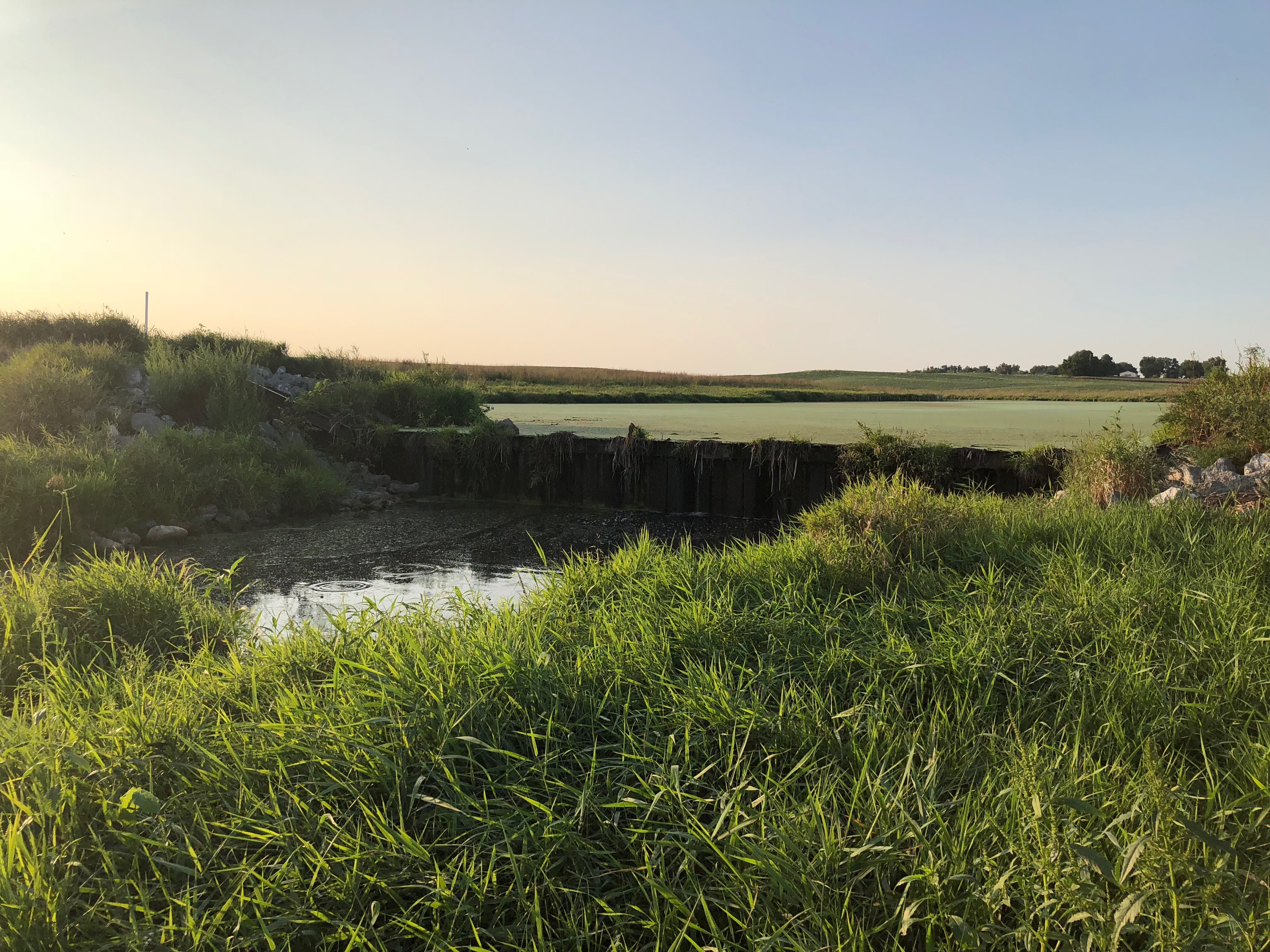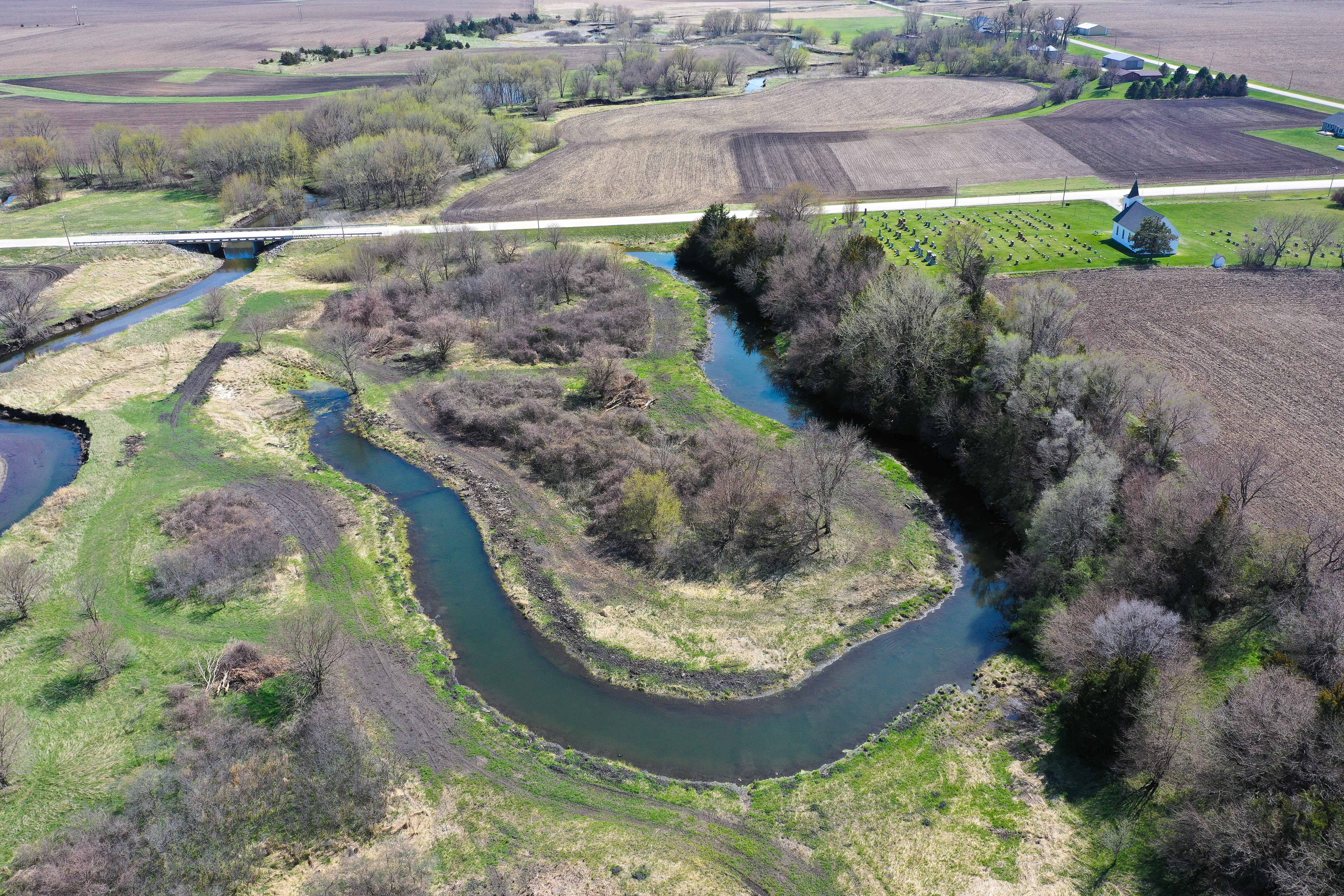By Kaitlin Little (Published March 29, 2022)
As spring kicks off, we’re celebrating some of the green efforts the Iowa Ag Water Alliance and our partners support through the Midwest Ag Water Quality Partnership Renewal project (MAWQP).

The MAWQP gets conservation strategies on the ground in watersheds like the North Raccoon where farmers are putting in practices such as cover crops, prairie strips, oxbows, and wetlands. Not only do these conservation practices impact soil health and farmers’ bottom line, but they also improve water quality and reduce flood risk. That’s why these upstream methods are considered green infrastructure for cities.
MAWQP project partners like Des Moines Public Works and the Great Outdoors Foundation are helping upstream farmers apply green infrastructure practices to positively impact Des Moines metro drinking water and flood reduction efforts.
In fact, the Great Outdoors Foundation is contributing $23 million to the MAWQP.
“We know that one of the most effective ways to impact water quality is through strategic investments in targeted watersheds. Green infrastructure allows us to safeguard our natural resources by protecting source water, reducing flood risk, and improving wildlife habitats — all of which contribute to a healthier ecosystem and cleaner water,” stated Hannah Inman, CEO of the Great Outdoors Foundation.
While many cities pay for gray infrastructure like culverts and dams to protect against floods, the City of Des Moines is also investing in green infrastructure.
“The City of Des Moines has a green-infrastructure-first design philosophy when solving problems that confront our community. Green infrastructure often has the advantage of benefiting the environment while solving an infrastructure problem,” said Jonathan Gano, Director of Public Works for the City of Des Moines.

For example, u-shaped river scars called oxbows can help slow water down during rain events and reduce flooding downstream. These restored wetlands also help clean stream water and provide habitat for wildlife like the endangered Topeka Shiner.
Gray infrastructure, on the other hand, is more limited.
“These are man-made and very often only do what they’re designed to do with no additional functions, like pipes that move water,” said Gano. “Sometimes that’s all you need and all that will work, but more often than not, there’s an opportunity to extract additional benefits from an infrastructure project by using green infrastructure. One way we do this is by working with partners upstream.”
The Great Outdoors Foundation is also taking a collaborative approach to water conservation. Its mission is to foster partnerships and support regional projects that expand and restore natural spaces and promote conservation.
“Green infrastructure, like the work outlined in the MAWQP, is not only in line with our goal to advance and elevate conservation but also follows a partnership model that the Great Outdoors Foundation aims to replicate and leverage in all of our initiatives,” said Inman.
When asked why he supports green infrastructure, Gano had this to say, “Using green infrastructure lets us build a more resilient community better able to withstand the conditions of a changing climate with a better use of our limited resources to improve the quality of life for all of our residents.”
If you would like to partner with IAWA on projects that impact your community, please email Engagement Manager Kaitlin Little at klittle@iowaagwateralliance.com. If you’re a farmer or landowner looking for financial assistance for water quality strategies, contact your local NRCS office.
